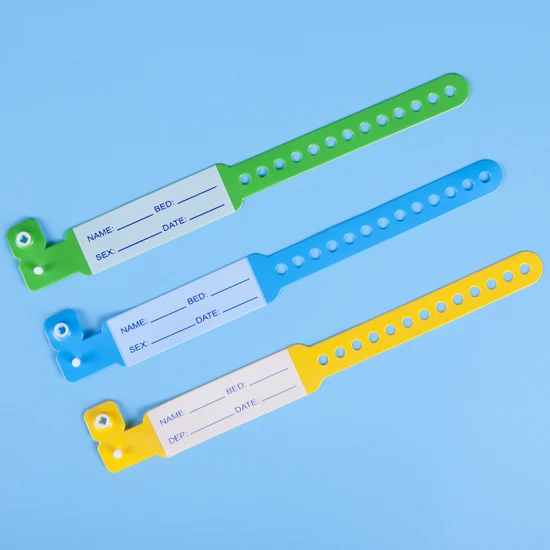The Impact of a Patient Identification Band in Improving Hospital Patient Tracking Systems
The Impact of a Patient Identification Band in Improving Hospital Patient Tracking Systems
Blog Article
How Patient Identification Band Plays a Crucial Role in Patient Management and Care
Patient Identification bands work as a vital gear in the detailed equipment of health care systems, serving as a guard against clinical mistakes. As the frontline tool for confirming Patient identity, these bands underpin vital processes from carrying out the appropriate medicine to guaranteeing the best person undergoes the designated treatment. The extensive impact of such a seemingly easy tool on Patient safety, experience and end results may stun many, leaving one to ponder the possible innovations and advancements that can additionally enhance their efficiency.

Understanding the Essentials of Patient Identification Bands
In spite of the simplicity of their look, Patient Identification bands serve a crucial role in health care settings. They usually display the Patient's complete name, date of birth, and an one-of-a-kind Identification number, offering as the primary source of Patient Identification - patient identification band. The use of these Identification bands is thought about an universal procedure in healthcare, aimed at making sure Patient security and precision of treatment distribution.
The Duty of Patient Identification Bands in Decreasing Medical Errors
A staggering number of clinical errors occur due to Patient misidentification, emphasizing the important function of Patient Identification bands. These bands, typically geared up with barcodes or QR codes, contain crucial Patient details such as name, age, and clinical history. In high-stress environments where clinical personnel manage numerous duties, Patient Identification bands offer as a trusted and quick referral.
Enhancing Patient Safety And Security With Identification Bands

The Influence of Patient Identification Bands on Patient Experience
Virtually all clients in health care setups experience the use of Identification bands throughout their care trip. These bands, normally put on around the wrist, have an extensive impact on the Patient experience. They offer as a consistent, visible suggestion of the Patient's identification and medical conditions, guaranteeing individuals see page that they are recognized and cared for.
Future Advancements and Technologies in Patient Identification Bands Innovation
While existing Patient Identification bands have shown efficient in improving care, the horizon of technological advancements promises also better renovations. RFID tags can offer real-time Patient place tracking, while QR codes can keep extensive Patient information accessible using smartphone scanning. Hence, future developments in Patient Identification bands hold substantial possibility in reinventing Patient care.
Verdict
Patient Identification bands are an important possession in healthcare, guaranteeing exact Patient Identification and minimizing clinical mistakes. These devices improve Patient security, increase self-confidence in health care systems, and enhance Patient experiences and results. With the capacity for future advancements in Identification band modern technology, their role in Patient monitoring and care is readied to become a lot more important, enhancing their relevance in the shipment of safe and efficient health care.
How Patient Identification Band Plays a Critical Duty in Patient Monitoring and Care
A staggering number of medical mistakes happen due to Patient misidentification, emphasizing the vital role of Patient Identification bands. patient identification band.Undoubtedly, the usage of Patient Identification bands significantly improves Patient safety and security in medical care setups. Thus, future innovations in Patient Identification bands hold significant possibility in revolutionizing Patient care
Patient Identification bands are an indispensable property in healthcare, making sure exact Patient Identification and minimizing medical errors.
Report this page